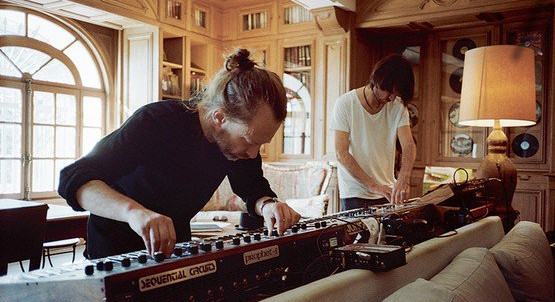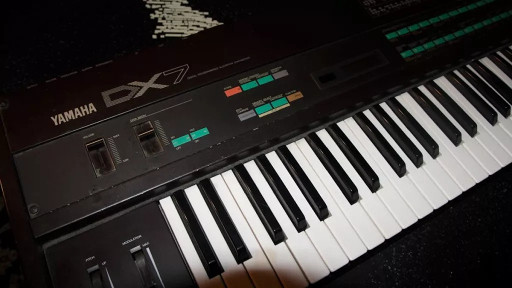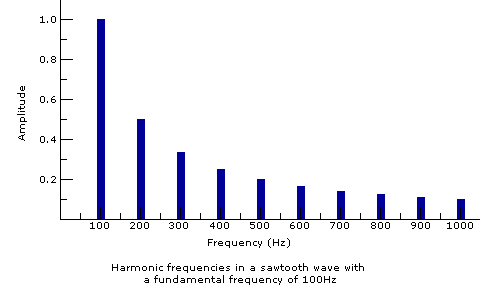Analog vs Digital vs Analog Modeled Synthesizers
Getting the warmth of Analog Synths inside your DAWIn today's world, synthesizers (or synths) are considered one of the key points in modern music genres, being constantly used in many producers and musician’s home studios

This brings a lot of doubt regarding which synth to choose. I’m pretty sure you all have noticed a revival of vintage gear in the last decades, and everybody's getting mad to put their hands on classic synths.
There has been a long debate regarding the differences between analog and digital synths: The idea that Analog synths sound better prevail for a long time. That was until recent days that thanks to the computing power we have a third option: Analog modeled synthesizers, also known as virtual analog emulation. In this article we will compare the 3 options, show some audio samples so you can make your own impression and gather some conclusions.
Analog Synthesizers
Analog equipment is built from electronic components (analog circuits) and tends to be expensive most of the time, and not perfect. This kind of synthesizer generates sound electronically, transforming electricity into sound. In their beginning, the sections we find in a modern synth were separated into modules such as oscillators (VCOs), filters (VCFs) and and amplifiers (VCAs). Those are known as modular synthesizers and they were high priced and hard to use, so Robert Moog designed a synthesizer that included a keyboard and the modules mentioned above (accessed by switches) that become a success and is what we commonly associate with synthesizer If we check the oscillator's soundwaves in an oscilloscope we won’t find perfect ones. For example, a sine wave in theory it's just one single harmonic, but when we see what the synthesizer one looks like, we find something interesting: it has a few harmonics!
Why is this happening? Well, as stated before, sound passes through a series of electronic components that aren’t perfect and alter the sound slightly. This saturation it’s a consequence of the electronic components and it gives the analog gear that character we are used to associate with them.
Digital Synthesizers

Digital synthesizers on the other hand are basically a computer, similar to the one inside the device you are reading this article. Specifically, digital synths use a DSP (digital signal processor) to produce sounds based in a series of 0 and 1. This technology dated from the seventies and by that time the sound that those DSPs could create was quite “cold” or “lifeless” in comparison with the analog synth’s one. It's funny though, because this “lifeless” sound they produce is quite perfect in comparison with the analog one.
As technology became better, digital synths were capable of including high quality samples of real instruments, and then process them with filters, modulation, etc. The electric pianos/keyboards are all digital synthesizers that have piano and other keyboards instruments samples in their memories, nowadays we can have every note of an instrument sampled at various volumes and articulation types.
Therefore, digital synthesis it’s not always a bad choice, it just depends what sound we are going for, if we want to get a piano, strings or rhodes sounds, good luck trying to get it with a Juno 60 for example.
Analog Synth Mojo and Virtual Analog (VA)
If we were to try side by side two same analog synths we may find some difference on the sound produced.
As explained earlier, those electronic components make the sound unperfect, even two components may not be able to produce the same exact sound. Also, the first analog synthesizer lacked the stability in pitch we are used to; first you’ll have to wait for the synth to stabilize the oscillators, but the pitch would drift away as time passed by and you would have to adjust it to be in tune again. Years later, analog synths replaced VCOs (Voltage controlled oscillators) with DCOs (Digital controlled oscillators) that rectified this drift away of the first analog oscillators in order to get a stable tuning. This improvement also was marked as lifeless or cold, because the natural deviation of pitch was a trademark of those firstborned synths. Still, they were analog synths but the oscillator was controlled by a digital process.

Virtual Analog (or analog modeling) synthesizers appeared between the mid and late nineties based on the need of musicians to have the sound of analog synthesizers but without the tuning or maintenance issues that were required as they were built of electronic components that tended to fail over time.
This synthesis is a type of physical modelling, which tries to emulate the behavior of the analog components inside the instruments, and despite how identical it may be, it will not perfectly imitate the behavior of analog synths due to all the factors that may alter the signal. However, it is unlikely that the ear will recognize this difference, as we mentioned before, it may exist between two units of the same synthesizer.
Some of the advantages of Virtual Analog are cost, which tends to be lower than their analog counterparts,Extended polyphony and patch memory.
Since this technology is digital, we can find VSTi/soft synths/software instruments using these algorithms to recreate those classic analog synth sounds. This comes pretty handy for musicians that are getting into synthesizers for the first time because the price tag tends to be quite lower than most hardware and the sound is stunning. Also we can travel anywhere with our laptop and still be able to produce music with high quality virtual analog instruments like the Digituria MatrixDude.
While there are musicians who still carry analog synths on tour, the benefits of touring with virtual analog synths, or VSTs are countless, the main ones are not having to take your synth to maintenance after a couple of gigs and not worry about not finding spare parts for it.
Now, let's compare what different types of synthesizers sound like.
And… How do they sound?
Let’s start by looking at the most common waves used in subtractive synthesis: the sawtooth and square waves. Both of them have a rich harmonic content therefore are the core of this kind of synthesis which is based on filtering out some frequencies in order to get the desired sound. Analog modeling, or virtual analog synthesis tries to recreate this kind of sound.

If we were to create a perfect sawtooth wave, following the mathematical models, we would have to get something like this. As you can see in the graph below, the amplitude of the harmonics decreases as they move away from the fundamental. The formula is quite simple; this wave contains every integer harmonic of the fundamental frequency (100 hz in this case) and the amplitude will be the inverse of its harmonic number.
In the real world we won’t find this example produced by an analog synth, period. But with digital synthesis this is possible, and it’s easy. Let’s look at this sawtooth produced by Ableton’s Operator, a digital synth: We see how the harmonics have less amplitude as they are far from the fundamental, however, this graph doesn’t look like the one above because the amplitude of the harmonics is notated in dBs, and it’s a logarithmic scale, but mathematically it’s the same as the former one.
Sawtooth wave comparison
In this test we are going to compare the three options: A digital synth (Ableton Operator) A real analog (Behringer Model D) and a modeled analog (or virtual analog) Matrix Dude.
The digital synth sounds as expected: not quite thick and without warmth. While the analog and virtual analog have a fat warmth sound.
Let's try this procedure again with square waves:
Square wave comparison
As we hear, both of the analog modeling sound akin, but where we find the big gap in sound it’s when we turn on the filter, let’s dive in.
Filter sweep comparison
The minimoog’s 4 poles 24db "ladder" type filter became a classic if we think about analog synth sound, the company even made the filter as a stopmbox unit in order to process sound through it. We’re not gonna get deep into how this low pass filter made it distinctive sound, but rather listen to the difference that we’re going to find in the realm of digital vs virtual analog:
Did you hear the difference? Take into account that for the real analog there's a human factor in the filter sweep. The difference is more clear when we start messing around with the resonance control.
Filter sweep with filter resonance (emphasis) comparison
Final thoughts
I hope this article makes you think if you really need an expensive analog synthesizer. The digital sound is not bad at all, even that coldness of which it is accused is the sound of many albums from the 80s. If you want that vintage analog sound, why not try a nice analog modeled synth? If the audio comparisons we put above it’s not enough for you, load it in your DAW of preference, connect a nice set of speakers or your headphones of preferences and enjoy the warmth Matrix Dude has to offer.